Moxa MC-7270-DC-CP-T Series User manual
- Category
- Server barebones
- Type
- User manual
This manual is also suitable for

MC-7270-DC-CP-T User’s Manual
Edition 2.0, February 2017
www.moxa.com/product
© 2017 Moxa Inc. All rights reserved.

MC-7270-DC-CP-T User’s Manual
The software described in this manual is furnished under a license agreement and may be used only in accordance with
the terms of that agreement.
Copyright Notice
© 2017 Moxa Inc. All rights reserved.
Trademarks
The MOXA logo is a registered trademark of Moxa Inc.
All other trademarks or registered marks in this manual belong to their respective manufacturers.
Disclaimer
Information in this document is subject to change without notice and does not represent a commitment on the part of
Moxa.
Moxa provides this document as is, without warranty of any kind, either expressed or implied, including, but not limited
to, its particular purpose. Moxa reserves the right to make improvements and/or changes to this manual, or to the
products and/or the programs described in this manual, at any time.
Information provided in this manual is intended to be accurate and reliable. However, Moxa assumes no responsibility for
its use, or for any infringements on the rights of third parties that may result from its use.
This product might include unintentional technical or typographical errors. Changes are periodically made to the
information herein to correct such errors, and these changes are incorporated into new editions of the publication.
Technical Support Contact Information
www.moxa.com/support
Moxa Americas
Toll
-free: 1-888-669-2872
Tel:
+1-714-528-6777
Fax:
+1-714-528-6778
Mox
a China (Shanghai office)
Toll
-free: 800-820-5036
Tel:
+86-21-5258-9955
Fax:
+86-21-5258-5505
Moxa Europe
Tel:
+49-89-3 70 03 99-0
Fax:
+49-89-3 70 03 99-99
Moxa Asia
-Pacific
Tel:
+886-2-8919-1230
Fax:
+886-2-8919-1231
Moxa India
Tel:
+91-80-4172-9088
Fax:
+91-80-4132-1045

Table of Contents
1. Introduction ...................................................................................................................................... 1-1
Overview ........................................................................................................................................... 1-2
Package Checklist ............................................................................................................................... 1-2
Product Features ................................................................................................................................ 1-2
Hardware Specifications ...................................................................................................................... 1-3
Hardware Block Diagram ..................................................................................................................... 1-4
2. Hardware Introduction ..................................................................................................................... 2-1
Appearance ........................................................................................................................................ 2-2
MC-7270-DC-CP-T Front View ....................................................................................................... 2-2
MC-7270-DC-CP-T Rear View ........................................................................................................ 2-2
Dimensions ........................................................................................................................................ 2-3
LED Indicators .................................................................................................................................... 2-3
Real Time Clock .................................................................................................................................. 2-4
3. Hardware Connection Description ..................................................................................................... 3-1
Installing the MC-7270-DC-CP-T ........................................................................................................... 3-2
Wiring Requirements ........................................................................................................................... 3-2
Connecting the Power ......................................................................................................................... 3-3
Grounding the MC-7270-DC-CP-T ......................................................................................................... 3-3
Connecting Data Transmission Cables ................................................................................................... 3-3
Connecting to the Network ........................................................................................................... 3-3
Connecting to a Serial Device ....................................................................................................... 3-4
Connecting a PS/2 Keyboard and Mouse ................................................................................................ 3-4
Connecting to the USB Device .............................................................................................................. 3-4
Connecting to a VGA Monitor ................................................................................................................ 3-5
Connecting to a DVI-D Monitor ............................................................................................................. 3-5
Connecting to a Speaker or a Headphone .............................................................................................. 3-6
Installing the Removable SATA Storage Drive ......................................................................................... 3-6
Installing the Internal SATA Storage Drive ............................................................................................. 3-7
Upgrading the Memory Module ............................................................................................................. 3-9
4. BIOS Setup ........................................................................................................................................ 4-1
Entering the BIOS Setup Utility ............................................................................................................ 4-2
Main Information ......................................................................................................................... 4-3
Advanced Settings ....................................................................................................................... 4-3
Boot Configuration ...................................................................................................................... 4-4
Peripherals Configuration ............................................................................................................. 4-4
HDC Configuration: Storage Device BIOS Settings ........................................................................... 4-5
Video Configuration ..................................................................................................................... 4-8
Chipset Configuration .................................................................................................................. 4-9
Hardware Monitor ...................................................................................................................... 4-10
Security Settings .............................................................................................................................. 4-10
Set Supervisor Password ............................................................................................................ 4-11
Power Settings ................................................................................................................................. 4-11
Boot Settings ................................................................................................................................... 4-12
Boot Type................................................................................................................................. 4-12
PXE Boot to LAN ........................................................................................................................ 4-12
Add Boot Options ...................................................................................................................... 4-12
USB Boot ................................................................................................................................. 4-12
EFI Device First ......................................................................................................................... 4-12
Boot Delay Time ........................................................................................................................ 4-13
Legacy ..................................................................................................................................... 4-13
Exit Settings .................................................................................................................................... 4-13
Exit Saving Changes .................................................................................................................. 4-14
Save Change Without Exit .......................................................................................................... 4-14
Exit Discarding Changes ............................................................................................................. 4-14
Load Optimal Defaults ................................................................................................................ 4-14
Load Custom Defaults ................................................................................................................ 4-14
Save Custom Defaults ................................................................................................................ 4-14
Discard Changes ....................................................................................................................... 4-14
Upgrading the BIOS .......................................................................................................................... 4-14
A. Regulatory Approval Statement ........................................................................................................ A-1
B. Adjusting the Audio Mixer Function .................................................................................................. B-1
C. Configuring the Serial Ports .............................................................................................................. C-1
How to Install the Application ............................................................................................................... C-1
How to Use the “mxSerialInterface” Utility ............................................................................................. C-3


MC-7270-DC-CP-T Introduction
1-2
Overview
The MC-7270-DC-CP-T computer features the Intel® Core™ CPU processor and comes with 4 serial ports, 4
Gigabit Ethernet ports, and 6 USB hosts. The computer offers high performance and versatile peripherals for
marine applications.
Designed with the highest quality and durability in mind, the marine-grade MC-7270-DC-CP-T computer
features a rugged chassis that can withstand 1g vibrations, providing a reliable platform that can be used even
in harshest of environments. In addition, the compact size, fanless design, and low power consumption deliver
an optimal thermal solution that makes installation easy for bridge systems in marine applications. Users can
easily install Windows XP Embedded, XP Professional, or Windows 7, to provide a flexible and friendly
environment for system development and application implementation.
Package Checklist
Each model is shipped with the following items:
• 1 MC-7270-DC-CP-T computer
• 2-pin terminal block for DC power input
• 2-pin terminal block for Power ON/OFF switch
• Hard disk installation kit
• Documentation and driver CD
• Quick installation guide (printed)
• Warranty card
NOTE
Please notify your sales representati
ve if any of the above items are missing or damaged.
Product Features
The MC-7270-DC-CP-T embedded computer has the following features:
• High performance Intel® Core™ i7 3555LE processor
• Compact size and fanless design
• Three independent displays (DVI-D x 2 + VGA x1 )
• 4 Gigabit Ethernet ports for network redundancy
• SATA drive storage capability
• -40 to 70°C operating temperature range

MC-7270-DC-CP-T Introduction
1-3
Hardware Specifications
Computer
CPU:
Intel® Core™ i7-3555LE, dual core 64-bit 2.5 GHz processor
Supported
OS: Windows 7, Windows XP SP3, Windows XP Embedded (must be installed by the user)
System Chipset:
Intel® QM77 Express Chipset
System Memory:
16 GB capacity, with 4 GB pre-installed (2 slots total, with a 4 GB DDR3/DDR3L-
1600 204
pin SO
-DIMM SDRAM pre-installed in 1 slot)
Storage:
2 SATA III 6 Gbps ports (one for internal storage and one for the removable storage tray)
USB:
USB 2.0 hosts x 6, Type A connectors
Other Peripherals
Audio:
Line in x 1, Line out x 1
KB/MS:
2 PS/2 interfaces supporting standard PS/2 keyboard and mouse
LPT Ports:
1
Display
Display Interface:
• VGA Interface x 1: 15
-pin D-Sub connector (female), with resolution up to 2048x1536 pixels with 32-
bit color
at 75 Hz
• DVI
-D Interface x 2: 29-pin DVI-D connectors (female), with resolution up to 1920 x1200 pixels with 32-
bit
color at 60 Hz
Graphics Controller:
Onboard Intel® HD 4000 graphics
Ethernet Interface
LAN:
4 auto-sensing 10/100/1000 Mbps ports (RJ45)
Magnetic Isolation
Protection: 1.5 kV built in
Serial Interface
Serial Standards:
• 2 RS
-232/422/485 ports, software-selectable (DB9 male)
• 2 RS
-232 ports (DB9 male)
Serial Communication Parameters
Data Bits:
5, 6, 7, 8
Stop Bits:
1, 1.5, 2
Parity:
None, Even, Odd, Space, Mark
Flow Control:
RTS/CTS, XON/XOF
Baudrate:
50 bps to 115.2 kbps
Serial Signals
RS
-232: TxD, RxD, DTR, DSR, RTS, CTS, DCD, GND
RS
-422: TxD+, TxD-, RxD+, RxD-, GND
RS
-485-4w: TxD+, TxD-, RxD+, RxD-, GND
RS
-485-2w: Data+, Data-, GND
LEDs
System:
Storage, Power
LAN:
100M/Link x 4, 1000M/Link x 4 (on connector)
Physical Characteristics
Housing:
Aluminum, sheet metal
Weight:
3.85 kg
Dimensions:
287 x 250 x 70 mm (11.30 x 9.84 x 2.76 in)
Mounting:
Wall
Environmental Limits
Operating Temperature:
-40 to 70°C (-40 to 158°F)
Storage Temperature:
-50 to 80°C (-58 to 176°F)
Ambient Relative Humidity:
5 to 95% (non-condensing)

MC-7270-DC-CP-T Introduction
1-4
Anti
-Vibration:
• 0.7 g @ DNV 2.4 (Class A), sine wave, 2
-100 Hz, 1 Oct./min., 1.5 hr per axis
• 1 g @ DNV 2.4, random wave, 3
-100 Hz, 2.5 hr per axis
• 2.1 g @ DNV 2.4 (Class C), sine wave, 2
-50 Hz, 1 Oct./min., 1.5 hr per axis
Power Requirements
Input Voltage:
24 VDC (with tolerance from 18 to 30 VDC, 2-pin terminal block)
Power Consumption:
Less than 100 W, 2.5 A @ 24 VDC
Standards and Certifications
Safety:
UL/cUL, CCC
EMC:
EN 55032 Class B, EN 55024-4-2, EN 55024-4-3, EN 55024-4-4, FCC Part 15 Subpart B Class A
Marine Standard:
IEC-60945 4th, IEC-61162
Marine Type Ap
proval: DNV 2.4 and ABS (Pending)
Green Product:
RoHS, cRoHS, WEEE
Reliability
MTBF (mean time between failures):
220,490 hrs
Warranty
Warranty Period:
3 years
Details:
See www.moxa.com/warranty
Hardware Block Diagram

2
2. Hardware Introduction
The MC-7270-DC-CP-T computer is compact, well-designed, and built rugged enough for industrial applications.
LED indicators help you monitor performance and identify trouble spots, multiple serial ports allow you to
connect different devices for wireless operation, and the reliable and stable hardware platform lets you devote
your attention to developing your applications.
The following topics are covered in this chapter:
Appearance
MC-7270-DC-CP-T Front View
MC-7270-DC-CP-T Rear View
Dimensions
LED Indicators
Real Time Clock

MC-7270-DC-CP-T Hardware Introduction
2-2
Appearance
MC-7270-DC-CP-T Front View
MC-7270-DC-CP-T Rear View

MC-7270-DC-CP-T Hardware Introduction
2-3
Dimensions
LED Indicators
LED Name LED Color LED Function
Power
(on the front panel)
Green Power is on and functioning normally
Off Power is off or a power error exists
Storage
(on the front panel)
Red (on) HDD/SSD is inserted and detected
Red (blinking) HDD/SSD is reading/writing
Off No activity
LAN
(on each LAN port)
Green 100 Mbps Ethernet mode
Yellow 1000 Mbps (Gigabit) Ethernet mode
Off No activity or 10 Mbps Ethernet mode

MC-7270-DC-CP-T Hardware Introduction
2-4
Real Time Clock
The embedded computer’s real-time clock is powered by a lithium battery. We strongly recommend that you do
NOT replace the lithium battery yourself. If the battery needs to be changed, contact the Moxa RMA service
team at http://www.moxa.com/rma/about_rma.aspx
.
ATTENTION
There is a risk of explosion if the wrong type of battery is used. To avoid this potential danger, always be sure
to use
the correct type of battery. Contact the Moxa RMA service team if you need to replace your battery.
C
aution
There is a r
isk of explosion if the battery is replaced by an incorrect type. D
ispose of used batteries according
to the instructions
on the battery.

3
3. Hardware Connection Description
This chapter shows you how to connect the MC-7270-DC-CP-T to the network and to various devices.
The following topics are covered in this chapter:
Installing the MC-7270-DC-CP-T
Wiring Requirements
Connecting the Power
Grounding the MC-7270-DC-CP-T
Connecting Data Transmission Cables
Connecting to the Network
Connecting to a Serial Device
Connecting a PS/2 Keyboard and Mouse
Connecting to the USB Device
Connecting to a VGA Monitor
Connecting to a DVI-D Monitor
Connecting to a Speaker or a Headphone
Installing the Removable SATA Storage Drive
Installing the Internal SATA Storage Drive
Upgrading the Memory Module

MC-7270-DC-CP-T Hardware Connection Description
3-2
Installing the MC-7270-DC-CP-T
Wall or Cabinet Mounting
The MC-7270-DC-CP-T comes with two brackets pre-installed on both ends of the computer. Use two screws
per side to attach the MC-7270-DC-CP-T to a wall or cabinet. We recommend that you use size M4 or larger
screws.
Wiring Requirements
This section describes how to connect serial devices to the MC-7270-DC-CP-T.
You should read and follow these common safety precautions before proceeding with the installation of any
electronic device:
• Use separate paths to route wiring for power and devices. If power wiring and device wiring paths must
cross, make sure the wires are perpendicular at the intersection point.
NOTE
Do not run signa
l or communication wiring together with power wiring in the same wire conduit. To avoid
interference, wires with different signal characteristics should be routed separately.
• Use the type of signal transmitted through a wire to determine which wires should be kept separate. The
rule of thumb is that wiring that shares similar electrical characteristics can be bundled together.
• Keep input wiring and output wiring separate.
• It is advisable to label the wiring to all devices in the system.
ATTENTION
Safety First!
Be sure to disconnect the power cord before installing and/or wiring your
MC-7270-DC-CP-T.
Wiring Caution!
Calculate the maximum possible current in each power wire and common wire. Observe all electrical codes
dictating the maximum current allowable for each wire size.
If the current goes above the maximum ratings,
the wiring could overheat, causing serious damage to your equipment.
Temperature Caution!
Be careful when handling
the unit. When the unit is plugged in, the internal components generate heat, and
consequently the outer casing may feel hot to the touch.

MC-7270-DC-CP-T Hardware Connection Description
3-3
Connecting the Power
The MC-7270-DC-CP-T model has a 24 VDC power input (with tolerance from 18 to 30 VDC) through the
terminal block. If power is supplied properly, the Power LED will light up.
For safety reasons, please use cables with the following specifications:
Wire range 14-22 AWG
Grounding the MC-7270-DC-CP-T
Grounding and wire routing help limit the effects of noise due to electromagnetic interference (EMI). Run the
ground connection from the ground screw to the grounding surface prior to connecting the power.
ATTENTION
This product is intended to be mounted to a well
-grounded mounting surface, such as a metal panel.
Earth Ground Wire: The figure shows the location of the earth ground on the
terminal block power connector. Connect the ground wire to an appropriately
grounded metal surface.
Connecting Data Transmission Cables
This section describes how to connect the MC-7270-DC-CP-T computer to the network and serial devices.
Connecting to the Network
Plug your network cable into the embedded computer’s Ethernet port. The other end of the cable should be
plugged into your Ethernet network. When the cable is properly connected, the LEDs on the embedded
computer’s Ethernet port will glow to indicate a valid connection.
The 10/100/1000 Mbps Ethernet LAN port uses 8-pin RJ45 connectors. The following diagram shows the
pinouts for these ports.
The LED indicator
s on the
right top and right bottom
corners glow a solid green color when the cable is
properly connected to a 100 Mbps Ethernet
network. The LED will flash on and off when
Ethernet packets are being transmitted or received.
Pin 10/100 Mbps 1000 Mbps
1 ETx+ TRD(0)+
2 ETx- TRD(0)-
3 ERx+ TRD(1)+
4 – TRD(2)+
5 – TRD(2)-
6 ERx- TRD(1)-
7 – TRD(3)+
8 – TRD(3)-
The LED indicator
s on the left top and left bottom
corners glow a solid
yellow
color when the cable is
properly connected to a 10
00 Mbps Ethernet
network. The LED will flash on and off when
Ethernet packets are being transmitted or received.

MC-7270-DC-CP-T Hardware Connection Description
3-4
Connecting to a Serial Device
The serial ports use DB9 connectors. COM1 and COM2 support RS-232. COM3 and COM4 support RS-232,
RS-422, or RS-485. You can use the application on the product CD to configure both COM1 and COM2. For
detailed instructions, refer to Appendix C. The pin assignments are shown in the following table:
DB9 Male
Port
RS
-232/422/485 Pinouts
Pin RS-232 RS-422
RS-485
(4-wire)
RS-485
(2-wire)
1 DCD TxDA(-) TxDA(-) –
2 RxD TxDB(+) TxDB(+) –
3 TxD RxDB(+) RxDB(+) DataB(+)
4 DTR RxDA(-) RxDA(-) DataA(-)
5 GND GND GND GND
6 DSR – – –
7 RTS – – –
8 CTS – – –
Connecting a PS/2 Keyboard and Mouse
Your MC-7270-DC-CP-T computer comes with 2 PS/2 mini-DIN connectors on the front panel to connect to a
PS/2 keyboard and PS/2 mouse. This 6-pin mini-DIN connector has the pin assignments shown below.
PS/2 Connector
Pin No. Signal Definition
1 PS/2 Keyboard Data
2 PS/2 Mouse Data
3 GND
4 VCC
5 PS/2 Keyboard Clock
6 PS/2 Mouse Clock
Connecting to the USB Device
The MC-7270-DC-CP-T comes with 2 USB 2.0 hosts on the front panel, and 4 USB 2.0 hosts on the rear panel.
The hosts can be used for an external flash disk or hard drive for storing large amounts of data. You can also
use these USB hosts to connect to a keyboard or a mouse.

MC-7270-DC-CP-T Hardware Connection Description
3-5
Connecting to a VGA Monitor
The MC-7270-DC-CP-T comes with a D-Sub 15-pin female connector on the front panel to connect a VGA
monitor. To ensure that the monitor image remains clear, be sure to tighten the monitor cable after connecting
it to the MC-7270-DC-CP-T. The pin assignments of the VGA connector are shown below.
DB15 Female Connector
Pin No. Signal Definition
1 Red
2 Green
3 Blue
4 NC
5 GND
6 GND
7 GND
8 GND
9 VCC
10 GND
11 NC
12 DDC Data
13 HSYNC
14 VSYNC
15 DDC Clock
Connecting to a DVI-D Monitor
The MC-7270-DC-CP-T computers come with two DVI-D connectors that can connect to two DVI monitors. Use
the cable to connect one end to the DVI-D connector and the other end to the monitor. See the following table
for DVI-D connector pin assignments.
DVI-D Connector
Pin No. Signal Definition
1 T.M.D.S. Data2-
2 T.M.D.S. Data2+
3 T.M.D.S. Data2/4 Shield
4 N/C
5 N/C
6 DDC Clock
7 DDC Data
8 Analog Vertical Sync
9 T.M.D.S. Data1-
10 T.M.D.S. Data1+
11 T.M.D.S. Data1/3 Shield
12 N/C
Pin No. Signal Definition
13 N/C
14 +5V Power
15 Ground
(return for +5V, HSync, and VSync)
16 Hot Plug Detect
17 T.M.D.S. Data0-
18 T.M.D.S. Data0+
19 T.M.D.S. Data0/5 Shield
20 N/C
21 N/C
22 T.M.D.S. Clock Shield
23 T.M.D.S. Clock+
24 T.M.D.S. Clock-

MC-7270-DC-CP-T Hardware Connection Description
3-6
Connecting to a Speaker or a Headphone
The MC-7270-DC-CP-T comes with line-in and line-out interfaces on the rear panel for connecting a
microphone and speaker or headphones.
Installing the Removable SATA Storage Drive
The MC-7270-DC-CP-T includes a removable storage device tray on the front panel. You need to install your
own storage drive. Either a SATA hard disk or solid state drive may be installed, but only an SSD will ensure full
anti-vibration compliance.
To install a SATA storage device, complete the following steps:
1. Disconnect the MC-7270-DC-CP-T from the power source.
2. To remove the storage device tray, insert a hex-type screwdriver in the appropriate slot, rotate it to the left,
and then move the lock towards the left so that the spring-loaded latch can be used to pull out the tray.
3. Remove the storage device tray from the slot and turn it over.
4. Place a disk drive into the storage device tray and install the four screws (in the hard drive installation kit)
to secure the drive in the tray.
5. Insert the storage device tray into the slot and secure it in place by pushing in the spring-loaded latch.
6. Use the protection key to lock the storage device tray into place.

MC-7270-DC-CP-T Hardware Connection Description
3-7
Installing the Internal SATA Storage Drive
You can install a SATA storage drive in the internal SATA slot in the MC-7270-DC-CP-T. This allows you to
expand the storage capacity of the MC-7270-DC-CP-T.
Before you continue, make sure that you have the storage drive expansion kit that is included your
MC-7270-DC-CP-T package.
1. Turn off the MC-7270-DC-CP-T and disconnect it from the power source.
2. Turn over the MC-7270-DC-CP-T to access the slot cover.
3. Remove the four screws that secure the slot cover to the computer; then, remove the slot cover.
4. Open the storage drive expansion kit that comes with your MC-7270-DC-CP-T package and make sure that
you have the following items:
• A plastic shell
• Five strips of foam cushions
• Four screws
• Two metal plates.
5. Fold the two long sides of the plastic plate upward.
6. Attach a foam cushion to each of the long folded sides on the plastic plate.
7. Attach the third foam cushion to the side of the extended flap on the plastic plate.
The following figure shows the completed plastic plate assembly.

MC-7270-DC-CP-T Hardware Connection Description
3-8
8. Turn the storage drive so that the SATA connector is facing you.
9. Place the plastic plate over the storage drive. Make sure that the switch hole cutouts on the plastic plate
align with the screw holes on the storage drive.
10. Install the four screws to secure the metal plates on the storage drive.
11. Attach the two remaining foam cushions next to the metal plates on the storage drive.
The following figure shows the completed storage drive assembly.
12. Connect the SATA cable and push the storage drive completely into the expansion slot.
The attached foam cushions help the storage drive to fit snuggly in the expansion slot.
NOTE
If the storage drive does not
fit snuggly in the expansion slot, you can add extra padding using non-volatile
materials (for example,
rubber pad or sponge).
13. Reinstall the slot cover over the expansion slot on the computer.
Page is loading ...
Page is loading ...
Page is loading ...
Page is loading ...
Page is loading ...
Page is loading ...
Page is loading ...
Page is loading ...
Page is loading ...
Page is loading ...
Page is loading ...
Page is loading ...
Page is loading ...
Page is loading ...
Page is loading ...
Page is loading ...
Page is loading ...
Page is loading ...
Page is loading ...
Page is loading ...
Page is loading ...
Page is loading ...
Page is loading ...
Page is loading ...
Page is loading ...
-
 1
1
-
 2
2
-
 3
3
-
 4
4
-
 5
5
-
 6
6
-
 7
7
-
 8
8
-
 9
9
-
 10
10
-
 11
11
-
 12
12
-
 13
13
-
 14
14
-
 15
15
-
 16
16
-
 17
17
-
 18
18
-
 19
19
-
 20
20
-
 21
21
-
 22
22
-
 23
23
-
 24
24
-
 25
25
-
 26
26
-
 27
27
-
 28
28
-
 29
29
-
 30
30
-
 31
31
-
 32
32
-
 33
33
-
 34
34
-
 35
35
-
 36
36
-
 37
37
-
 38
38
-
 39
39
-
 40
40
-
 41
41
-
 42
42
-
 43
43
-
 44
44
-
 45
45
Moxa MC-7270-DC-CP-T Series User manual
- Category
- Server barebones
- Type
- User manual
- This manual is also suitable for
Ask a question and I''ll find the answer in the document
Finding information in a document is now easier with AI
Related papers
-
Moxa MC-7200-MP-T Series User manual
-
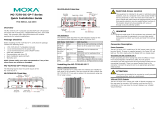 Moxa Technologies MC-7200-DC-CP-T Series Quick Install Guide
Moxa Technologies MC-7200-DC-CP-T Series Quick Install Guide
-
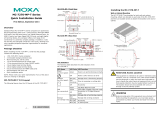 Moxa Technologies MC-7270-MP-T Quick Install Guide
Moxa Technologies MC-7270-MP-T Quick Install Guide
-
Moxa V2403C Series User manual
-
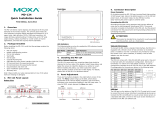 Moxa Technologies MD-124 Series Quick Install Guide
Moxa Technologies MD-124 Series Quick Install Guide
-
Moxa MD-119 Series Quick setup guide
-
Moxa Technologies MC-1200 Series Quick Install Guide
-
Moxa Technologies MC-7400 Series User manual
-
Moxa Technologies UC-2114-T-LX Quick Install Guide
-
Moxa MC-7400 Series Quick setup guide
Other documents
-
Ewent EW9171 Datasheet
-
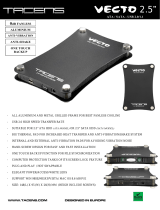 Tacens VECTO2.5SATA Datasheet
Tacens VECTO2.5SATA Datasheet
-
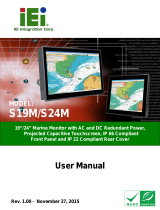 IEI Technology S24M User manual
IEI Technology S24M User manual
-
Lenovo 7303E7U - M58E SFF E8400 1GB/160 DVR WVB Hardware Maintenance Manual
-
Bematech LC8700 User manual
-
 Moxa Technologies MD-119 User manual
Moxa Technologies MD-119 User manual
-
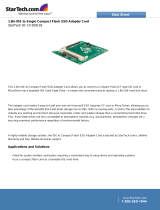 StarTech.com CF2IDE18 Datasheet
StarTech.com CF2IDE18 Datasheet
-
Microsoft 7270 User guide
-
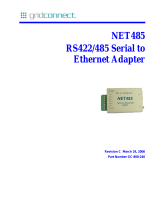 GridConnect 485 User manual
GridConnect 485 User manual
-
Alcatel Carrier Internetworking Solutions 7270 MSC User manual





















































